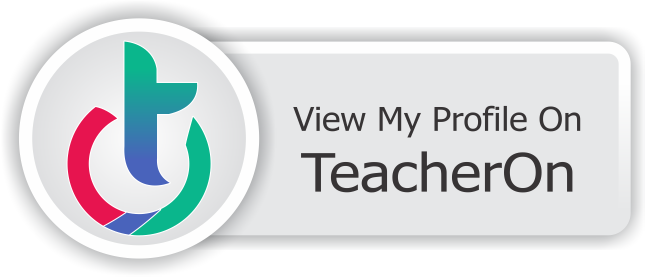Description
Module Wise Course Curriculum:
Module 1: Introduction to Web Design
Understanding the basics of web design
Evolution of web design
Principles of good web design
Introduction to HTML5, CSS3, and JavaScript, ES6
Module 2: HTML Fundamentals
Understanding the structure of HTML
Tags, attributes, and elements
Creating and formatting text
Working with links, images, and multimedia
Module 3: CSS Fundamentals
Introduction to Cascading Style Sheets (CSS)
Selectors, properties, and values
Styling text, backgrounds, and borders
Box model and layout techniques
Module 4: Responsive Web Design
Introduction to responsive web design
Media queries and breakpoints
Flexible layouts and fluid images
Testing and debugging for multiple devices
Module 5: JavaScript Basics
Introduction to JavaScript
Variables, data types, and operators
Control structures: loops and conditionals
Functions and events
Module 6: Introduction to Web Development Tools
Overview of web development tools like text editors, IDEs, and browsers
Version control systems (e.g., Git)
Browser developer tools for debugging and testing
Module 7: Design Principles and User Experience (UX)
Understanding design principles: layout, typography, color theory
User experience (UX) fundamentals
Wireframing and prototyping tools
Conducting usability testing
Module 8: Introduction to Content Management Systems (CMS)
Overview of Content Management Systems (CMS)
Popular CMS platforms (e.g., WordPress / Joomla/ Drupal)
Installing and configuring a CMS
Basic customization and content management
Module 9: Web Graphics and Multimedia
Introduction to web graphics formats (e.g., JPEG, PNG, SVG)
Basics of graphic design for the web
Creating and optimizing images for the web
Incorporating multimedia elements like audio and video
Module 10: SEO Basics
Understanding Search Engine Optimization (SEO)
On-page and off-page SEO techniques
Keyword research and analysis
SEO best practices for web design
Module 11: Introduction to E-Commerce and Web Security
Basics of e-commerce websites
Payment gateways and shopping carts
Introduction to web security
Securing websites against common threats
Module 12: Final Project
Capstone project to demonstrate skills learned throughout the course
Designing and developing a complete website from scratch
Presenting the project and receiving feedback
This module-wise breakdown should provide beginners with a comprehensive understanding of website designing, covering both technical skills and design principles.
Student’s Benefit For this Curriculum:
Students can gain numerous benefits from pursuing a diploma in website designing, including:
Developing In-Demand Skills: Website designing is a highly sought-after skill in today’s digital age. By completing a diploma program, students acquire the technical skills and knowledge needed to design and develop professional websites, making them attractive candidates to employers in various industries.
Career Opportunities: With the increasing demand for websites across businesses and organizations, there is a growing need for skilled website designers. Completing a diploma in website designing opens up a wide range of career opportunities, including roles such as web designer, front-end developer, UI/UX designer, and freelance web designer.
Creative Outlet: Website designing allows students to unleash their creativity and artistic skills. They have the opportunity to express themselves through design elements such as layout, color, typography, and imagery, making the field of website design both fulfilling and enjoyable.
Freelancing and Entrepreneurship: Many website designers choose to work independently as freelancers or start their own web design businesses. By completing a diploma program, students gain the skills and confidence to pursue freelancing opportunities or launch their own entrepreneurial ventures in the field of website design.
Flexibility and Remote Work Opportunities: Website designing is a field that offers flexibility in terms of work arrangements. Many web designers have the option to work remotely, allowing them to enjoy a better work-life balance and the freedom to work from anywhere with an internet connection.
Continuous Learning and Growth: The field of website design is constantly evolving, with new technologies, tools, and trends emerging regularly. By completing a diploma program, students develop a strong foundation in website designing principles and techniques while also gaining the ability to adapt to changes and continue learning throughout their careers.
Portfolio Development: A diploma program typically includes opportunities for students to work on real-world projects and build a portfolio showcasing their skills and accomplishments. A strong portfolio is essential for attracting potential clients or employers and demonstrating expertise in website design.
Networking Opportunities: Diploma programs often provide opportunities for students to connect with industry professionals, mentors, and fellow students. Networking can be valuable for gaining insights, receiving feedback, finding job opportunities, and building relationships within the web design community.
Overall, pursuing a diploma in website designing offers students a pathway to acquiring valuable skills, advancing their careers, and realizing their creative potential in a rapidly growing and dynamic field.
What i will get After Completing this Course:
- Certificate of Completion ( Govt Recognized which is accepted in Govt & Private Sector ).
- Marksheet.
- Alumni Portal & Job Board Access.
- Digital Project Repository URL.
- LinkedIn Profile.
- Placement Assistance via Job Portal & our own Network.







Reviews
There are no reviews yet.